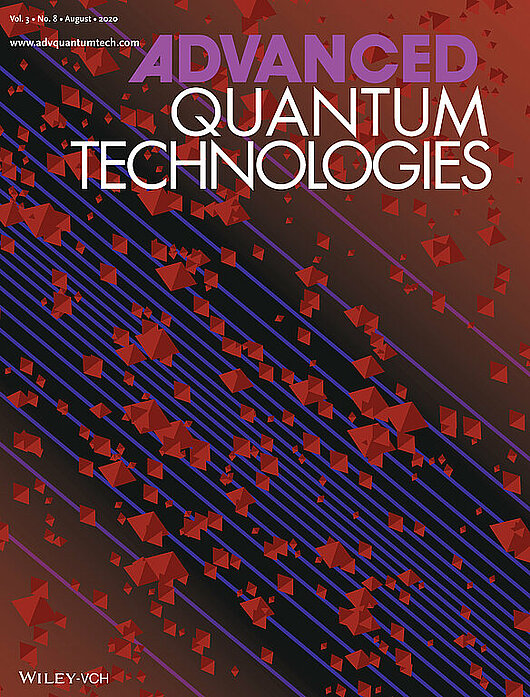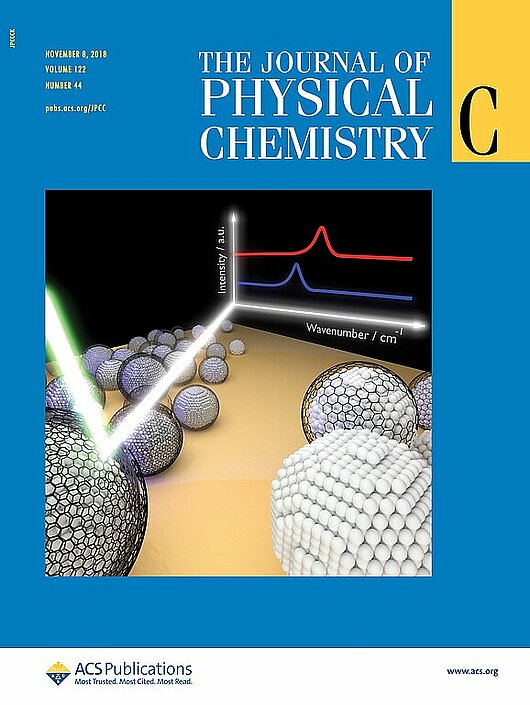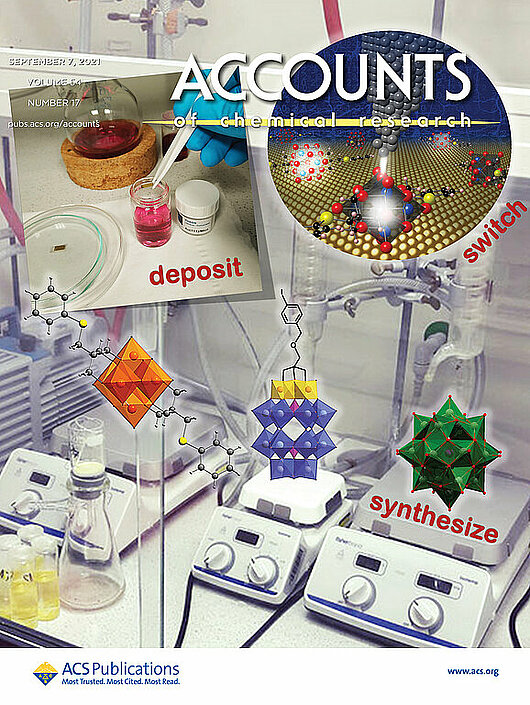R. Pütt, P. Kozłowski, I. Werner, J. Griebel, S. Schmitz, J. Warneke, K. Y. Monakhov
Inorg. Chem. 2021, 60, 80–86
https://pubs.acs.org/doi/10.1021/acs.inorgchem.0c02257
A tris(alkoxo)pyridine-augmented Wells–Dawson polyoxometalate (nBu4N)6[WD-Py] (WD = P2V3W15O59(OCH2)3C, Py = C5H4N) was functionalized with phthalocyaninato metal moieties (MPc where M = Y or Yb and Pc = C32H16N8) to afford (nBu4N)4[HWD-Py(MPc)] compounds. High-resolution mass spectrometry was used to detect and identify the hybrid assembly. The magnetism studies reveal substantial differences between M = Yb (monomeric, single-ion paramagnetism) and M = Y (containing dimers, radical character). The results of electronic paramagnetic resonance spectroscopy, SQUID magnetometry, and magnetochemical calculations indicate the presence of intramolecular charge transfer from the MPc moiety to the polyoxometalate and of intermolecular charge transfer from the MPc moiety of one molecule to the polyoxometalate unit of another molecule. These compounds with identified VIV ions represent unique examples of transition-metal/lanthanide complex-POM hybrid compounds with nonphotoinduced charge transfer between electron donor and acceptor centers.
R. Pütt, X. Qiu, P. Kozłowski, H. Gildenast, O. Linnenberg, S. Zahn, R. C. Chiechi, K. Y. Monakhov
Chem. Commun. 2019, 55, 13554–13557
https://pubs.rsc.org/en/content/articlelanding/2019/cc/c9cc06852j/unauth#!divCitation
The two first representatives of phthalocyaninato (Pc) lanthanide-ligated polyoxovanadate cages {[V12O32(Cl)](LnPc)n}n−5 (n = 1 or 2, Ln = Yb3+) were synthesised and fully characterised. These magnetic complexes form two-dimensional self-assembled monolayers exhibiting electrical conductivity on gold substrate surfaces, as assessed by using an EGaIn tip.
M. Stuckart, K. Y. Monakhov
Chem. Sci. 2019, 10, 4364–4376
https://pubs.rsc.org/en/content/articlelanding/2019/sc/c9sc00979e#!divAbstract
The non-covalent interaction of polyoxometalates (POMs) with inorganic- or organic-based moieties affords hybrid assemblies with specific physicochemical properties that are of high interest for both fundamental and applied studies, including the discovery of conceptually new compounds and unveiling the impact of their intra-supramolecular relationships on the fields of catalysis, molecular electronics, energy storage and medicine. This minireview summarises the recent advances in the synthetic strategies towards the formation of such non-covalent POM-loaded assemblies, shedding light on their key properties and the currently investigated applications. Four main emerging categories according to the nature of the conjugate are described: (i) POMs in metal–organic frameworks, (ii) POMs merged with cationic metal complexes, (iii) architectures generated with solely POM units and (iv) POMs assembled with organic molecular networks.
M. Glöß, R. Pütt, M. Moors, E. Kentzinger, W. Pyckhout-Hintzen, K. Y. Monakhov
Nanoscale 2019, 11, 4267–4277
https://doi.org/10.1039/C8NR08008A
The far-reaching interplay between the speciation of polyoxometalates (POMs) in the liquid phase and the POM adsorption characteristics on substrate surfaces yet remains to be understood. The significance of this interplay is however paramount because it indicates the degree of technical applicability of solvent-processable POM molecules. Herein, we target this fundamentally important issue, shedding light on the “POM–counterion–solvent” and “POM–counterion–solvent–substrate” processes. We effectively combine the results from small-angle X-ray scattering in solution with surface sensitive scanning tunneling microscopy and X-ray photoelectron spectroscopy measurements and present on this basis a semi-quantitative analysis which provides an excellent correlation between both approaches. The MeCN-solution speciation of a tris(alkoxo)-ligated Wells–Dawson-type polyoxoanion – explored as a representative of commonly negatively charged POM-based inorganic–organic nanostructures – is strikingly connected with the growth of porous two-dimensional molecular layers on highly oriented pyrolytic graphite (HOPG). Low water amounts dramatically transform intermolecular relationships toward hierarchical agglomeration that inhibits the layer formation on HOPG. The obtained findings lay the groundwork for a mechanistic study of controlled nucleation and growth of POM nanostructures on weakly interacting surfaces.
O. Linnenberg, M. Moors, A. Notario-Estévez, X. López, C. de Graaf, S. Peter, C. Bäumer, R. Waser, K. Y. Monakhov
J. Am. Chem. Soc. 2018, 140, 16635–16640
https://doi.org/10.1021/jacs.8b08780
The sustainable development of IT-systems requires a quest for novel concepts to address further miniaturization, performance improvement, and energy efficiency of devices. The realization of these goals cannot be achieved without an appropriate functional material. Herein, we target the technologically important electron modification using single polyoxometalate (POM) molecules envisaged as smart successors of materials that are implemented in today’s complementary metal-oxide-semiconductor (CMOS) technology. Lindqvist-type POMs were physisorbed on the Au(111) surface, preserving their structural and electronic characteristics. By applying an external voltage at room temperature, the valence state of the single POM molecule could be changed multiple times through the injection of up to 4 electrons. The molecular electrical conductivity is dependent on the number of vanadium 3d electrons, resulting in several discrete conduction states with increasing conductivity. This fundamentally important finding illustrates the far-reaching opportunities for POM molecules in the area of multiple-state resistive (memristive) switching.




